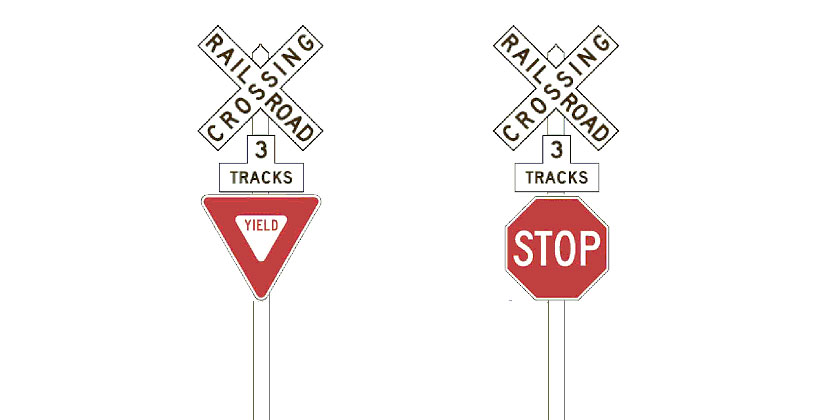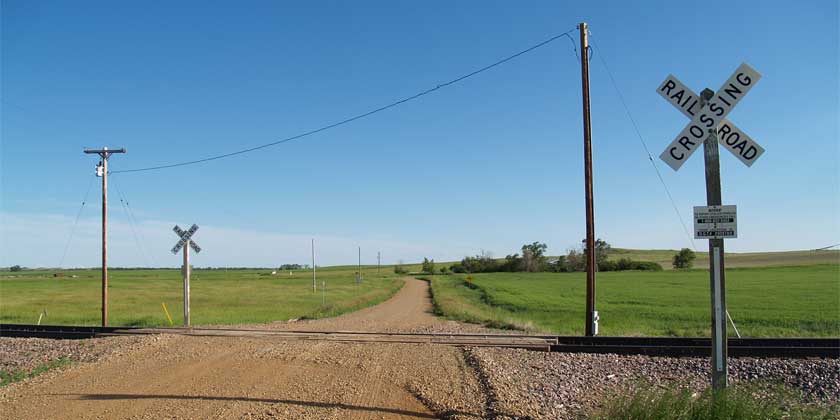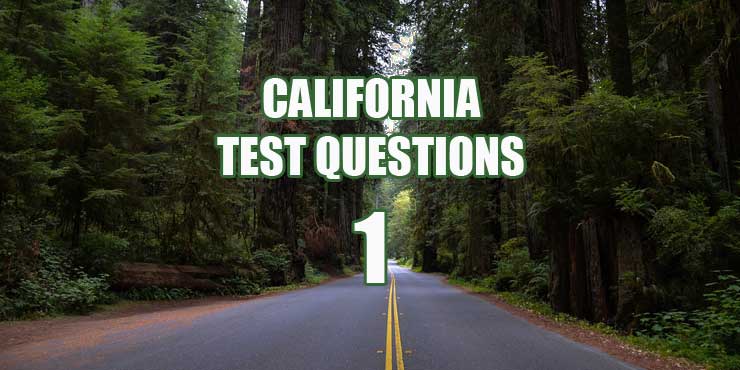A Crossbuck sign at a railroad crossing has the same meaning as a:
A. Speed Limit sign
B. Stop sign
C. Yield sign
Do you know the answer?
The Warning Sign and the Crossbuck Sign
You must be careful when approaching a highway-rail intersection. You will most likely see the circular warning sign ahead of the crossing. It indicates that you should slow down, look, and listen.
At the railroad crossing, you will see the white crossbuck sign. It is a regulatory sign with the same meaning as a yield sign. If a train is approaching, you must yield the right-of-way.

Trains Can’t Stop Quickly
Remember, trains always have the right-of-way. They cannot swerve, stop quickly, or change directions to avoid collisions.
Passive Rail Grade Crossings
A passive crossing is a crossing with no signals or gates. You will often see the Crossbuck sign and an indication of the number of tracks (if more than one). Stop you if a train is approaching.
Research shows that many road users need help understanding the regulatory meaning of the Crossbuck sign. As a result, you will likely see additional signs at passive crossings.
Most passive crossings will have either an additional yield sign or a stop sign. Crossings that require a stop already have the additional stop sign, but yield signs are rare. Expect to see more of them in the future.

Manual on Uniform Traffic Control Devices
The text in the National Manual on Uniform Traffic Control Devices (MUTCD) now reads:
A YIELD sign shall be the default traffic control device for Crossbuck Assemblies on all highway approaches to passive grade crossings unless an engineering study performed by the regulatory agency or highway authority having jurisdiction over the roadway approach determines that a STOP sign is appropriate.
When You Must Stop
Even if there isn’t a stop sign at a crossing, you must come to a complete stop if a train is approaching and is close enough to be a hazard.
You must also come to a complete stop if a flag person signals you to stop, if red lights are flashing, or if a crossing gate is closed.
You should stop at least 15 feet (about a car’s length) from the nearest rail and usually at most 50 feet away.
Driving around a gate that is not entirely up is illegal, even if red lights have stopped flashing.
Vehicles That Must Always Stop
Remember, some vehicles are required to stop at all crossings. These vehicles include passenger buses, school buses, and vehicles carrying hazardous loads.
Learn More
- Understand the Difference Between a Revoked and Suspended License
- California Road Signs and Traffic Signals Test
- California Road Sign Quiz – 20 Road Signs You Must Know
- Can You Turn Against a Red Arrow?
- What You Must Know about California Alcohol Laws
Photo Passive Crossing by: Andrew Filer
Stop signs and yield signs at crossings by Xzelenz Media.


